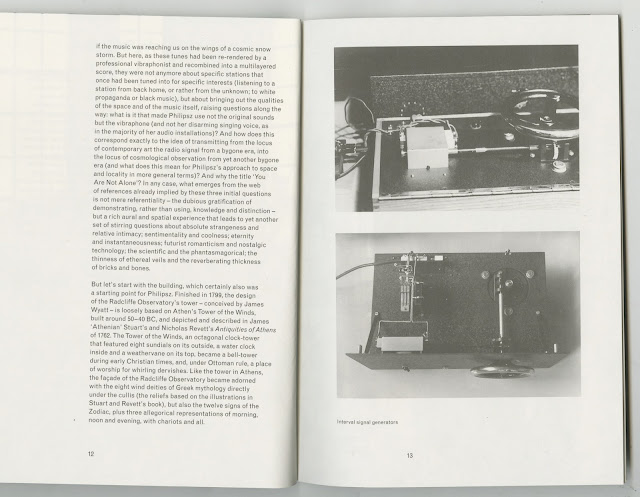Susan Philipsz
Artist Susan Philipsz uses sound, particular in the form of her own singing voice and projects in into spaces. Her interests are not just in sound but in sound as sculpture, as she describes within this work, War damaged instruments:
"Sounds are calling down the 86m-long Duveen Gallery at Tate Britain, from 14 speakers mounted high on the walls. Otherwise, the space is empty.
You can’t predict which speaker will next come to life with plangent, mournful music. Each of the speakers plays fragments of the Last Post, performed on brass and woodwind instruments all mangled by war. Sometimes it’s a sharp bugle note, sometimes a sonorous gasp, sometimes a noise like wind in a drainpipe. This is War Damaged Musical Instruments by Susan Philipsz.
At the farthest end of the space, it’s the bugle that sounded the charge of the Light Brigade at the 1854 Battle of Balaclava in the Crimean war. At the other end, a B flat bugle found by the body of a 14-year-old drummer boy after the Battle of Waterloo sounds its notes. In between play a tuba recovered from the German trenches in 1915, a cavalry trumpet salvaged from a ship torpedoed by a submarine off Portland Bill in 1918, a ruined coronet played in the Boer war, plus instruments recovered from the Alte Münz bunker in Berlin and from battles in Hanover and Bavaria. They come from army museums in Twickenham and Nuremberg, Berlin and Nottingham-shire. Somehow the players, also from Britain and Germany, coax them into some sort of life. Often, theirs are the first breaths to pass through these wrecked instruments since the wars that ruined them."
Philipsz, 45, is the first person in the history of the award to have created nothing you can see or touch. Instead, she sculpted her prizewinning work in sound – indeed from the sound of her own voice, singing a Scottish lament over the river Clyde in her hometown, Glasgow.
Reflection
What captivates me about Susan Philipsz work is how she resurrects sounds from the dead, the use of sound from damaged instruments has haunting ghost like qualities to it, when displayed in a a gallery setting the clean cut nature of the spaces changes the nature of the sound allowing it to conjure a scene tailored to the individuals imagination.The mixed tones from the speakers, allow the interaction to the work to be different for each viewer. Philipsz 2010 turner prize winning piece entitled lowlands is particular relevant to my ongoing experimentation with sound, what I find intriguing about her work is how she chooses spaces that people might otherwise neglect, such as the under side of a bridge. By projecting sound in a public space, passers by enter into a charged space and become part of the artwork itself. Within my own work I will be investigating the power and potential of sound, as I start to see it as a sculpture form as well as a music element.
Sources











No comments:
Post a Comment